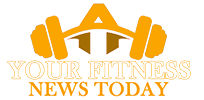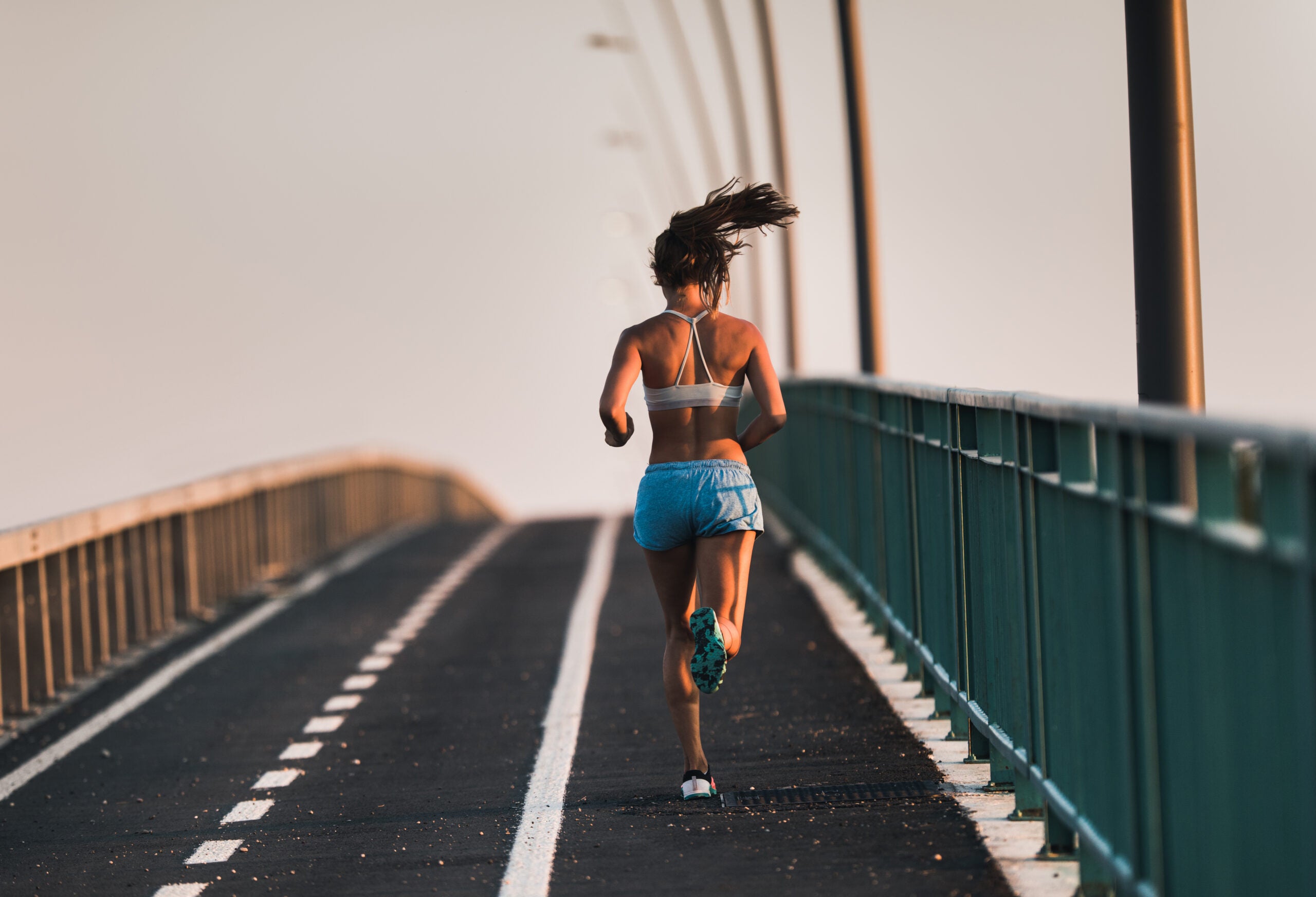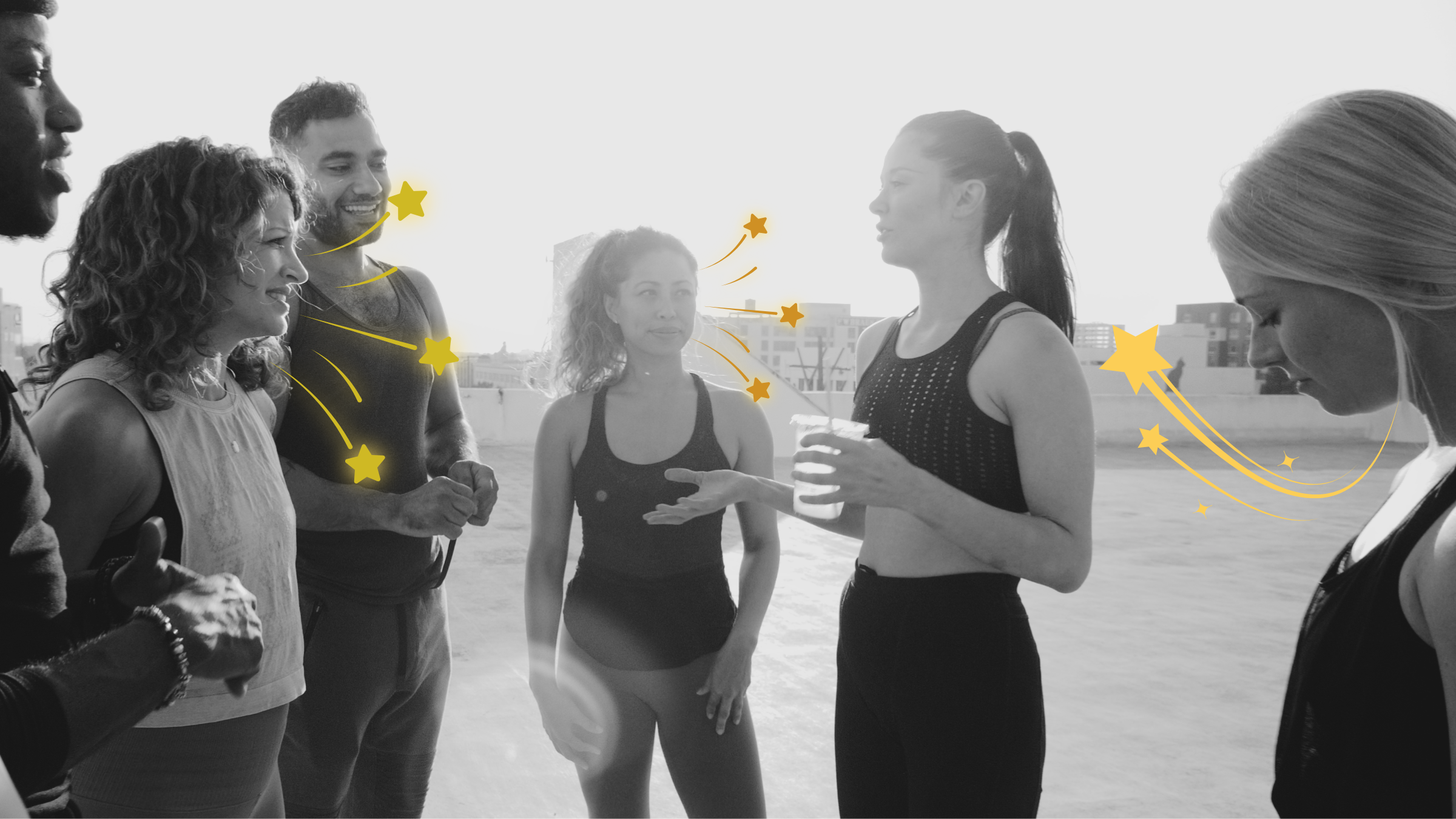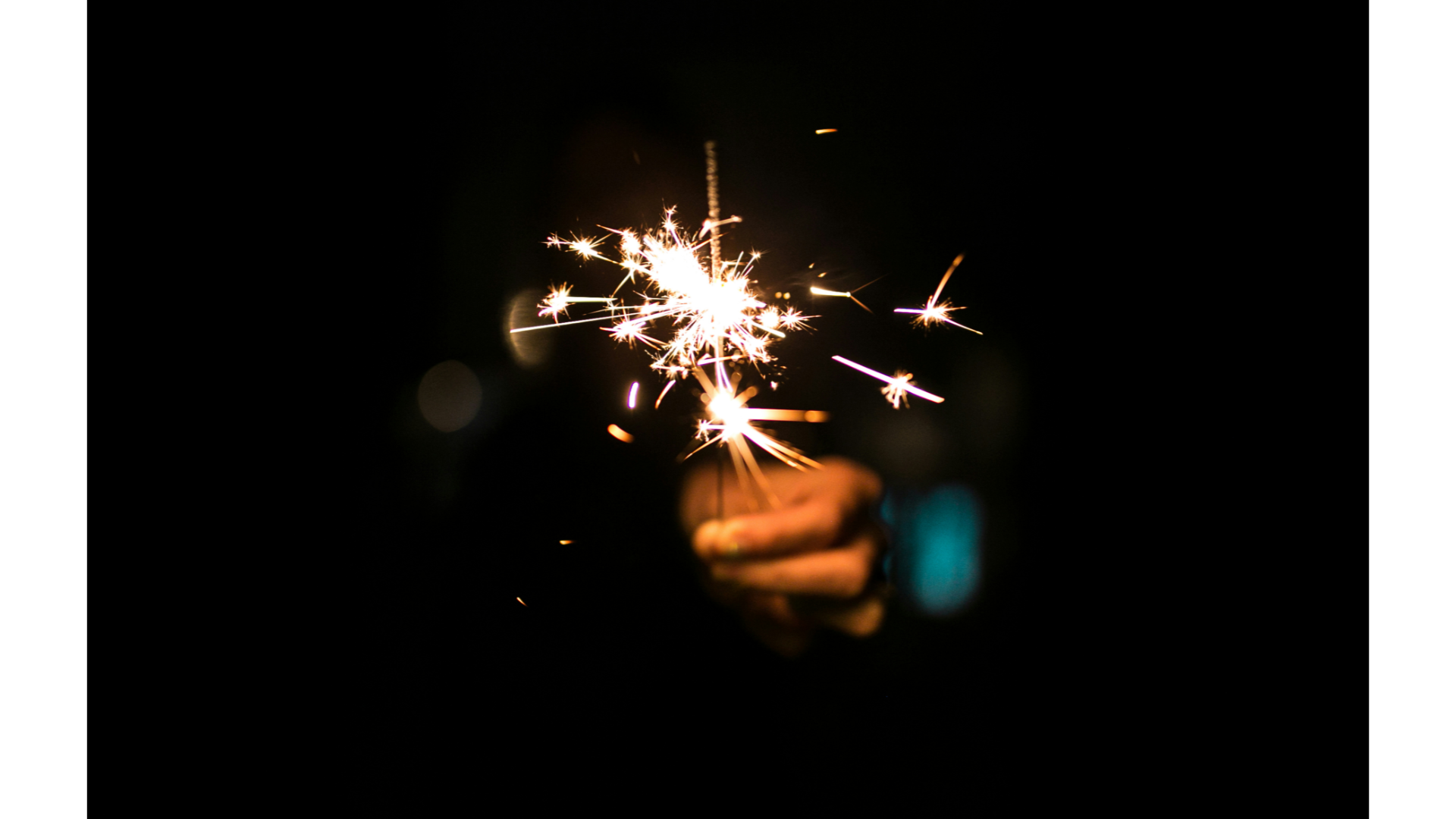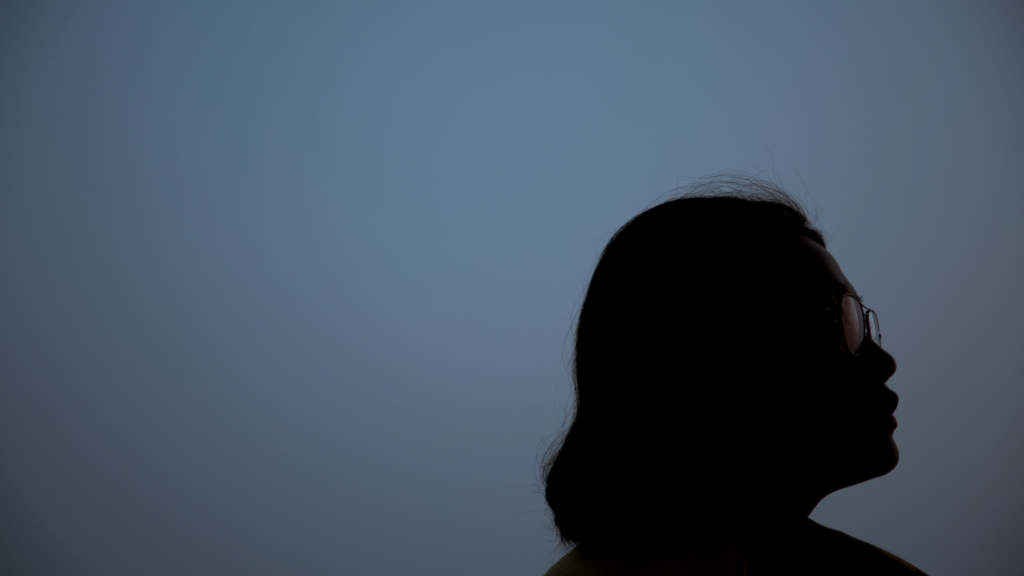“], “filter”: { “nextExceptions”: “img, blockquote, div”, “nextContainsExceptions”: “img, blockquote, a.btn, a.o-button”} }”>
Heading out the door? Read this article on the new Outside+ app available now on iOS devices for members!
>”,”name”:”in-content-cta”,”type”:”link”}}”>Download the app.
If you’ve been feeling worn out or having a hard time regulating your emotions lately, yin yoga can be a truly beneficial practice for you. The idea is if you’re feeling frazzled and fatigued, this slow-moving, 30-minute yin yoga for stress and anxiety sequence will help remind you to take a “less is more” mentality, soothe your nervous system, and help alleviate anxiety and fatigue.
You’ll explore different variations of common yin yoga poses, including reclined poses, forward folds, as well as supported backbends. You also have the option of using a bolster or some pillows for support if you like. There’s even an extra-long Savasana at the end.
You’ll find yourself wanting to turn to this 30-minute yin yoga sequence anytime, although it’s particularly helpful at the end of the day.
30-Minute Yin Yoga for Stress and Anxiety
Try to release into each pose and linger there for about 4 minutes. If you want to make the practice a little extra comfy and more restorative, you can use a bolster for some of the poses. If you don’t have one at home, you can easily substitute a ddense couch cushion, a couple of bed pillows that you stack on top of the other, even a block. And it’s not required to use a prop of any sort.
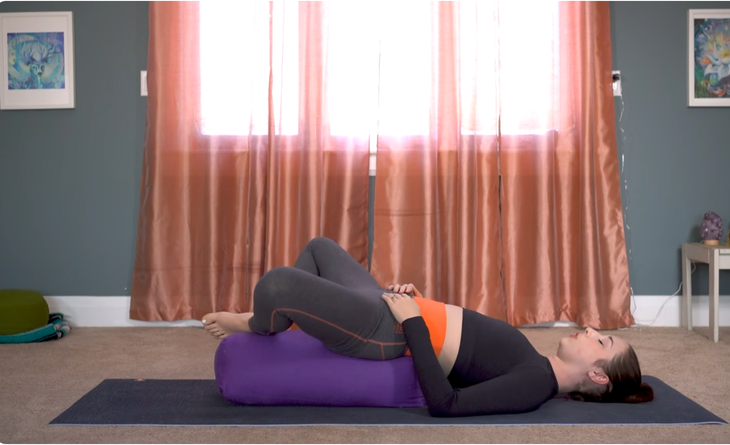
Supported Bridge + Reclined Butterfly
This is a variation of Supported Bridge and Reclined Butterfly. Elevating your hips in hip openers gives a different feel to the stretch. If it feels too intense, try folded blankets instead of pillows or do a traditional variation of Reclined Butterfly with your low back on the mat and your knees apart.
Lie down with your knees bent and your feet on the mat. If you’re using props, slide whatever you have underneath your sacrum, as you normally would for Supported Bridge. Stay here or, for Reclined Butterfly with your hips slightly elevated, let your knees fall away from each other. Rest your hands on your lower belly, on the mat alongside you, or for a chest stretch, cactus your arms and rest your hands, palms up, alongside your head.
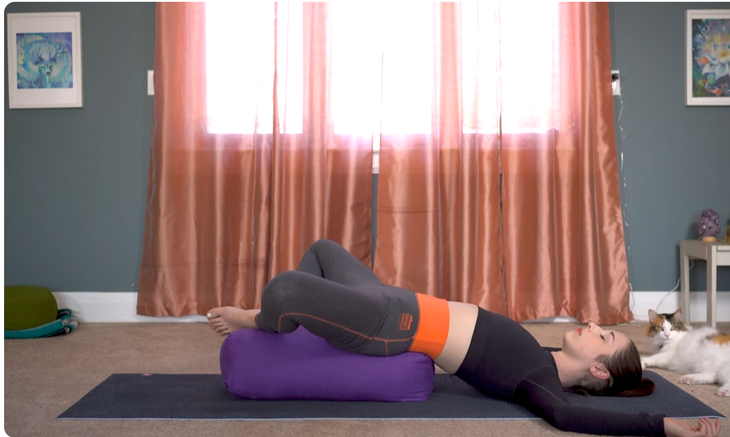
As you settle into the pose, take some slow belly breaths, in and out through your nose, trying to relax a little more each time you exhale. Notice if you’re tensing through your quads or shoulders and relax into the pose a little more. Let your legs be a little more weightless, especially if you’ve been on your feet most of the day.
When you’re ready to come out of the pose, lift your knees back up and to center and let your knees and thighs release toward your belly. You can sway and rock a little side to side. Then slowly roll onto one side and off the bolster.

Supported Sphinx Pose
I prefer doing Sphinx Pose with a bolster wedged beneath the chest because it supports you so you don’t need to use your arms to hold yourself upright. You can play around a little with the placement of the bolster or pillows. The closer toward you that you wedge the prop, the more intense the backbend. Alternatively, the further you move the prop away from you and the further up your chest you situate it, the more subtle the backbend. Try to find the perfect intensity for you right now, so that you’re opening up through your chest and getting a little backbend without pinching or compressing through your lower back. Either way, you want your front hip points resting on the mat.
Although your upper body is supported, you are still engaging your lower body by keeping the tops of your feet pressing into the mat and finding an internal rotation in your legs so your heels don’t fall toward each other.
Release your shoulders away from your ears and feel your breath go down so that when you inhale, you can really feel your belly push into the mat.
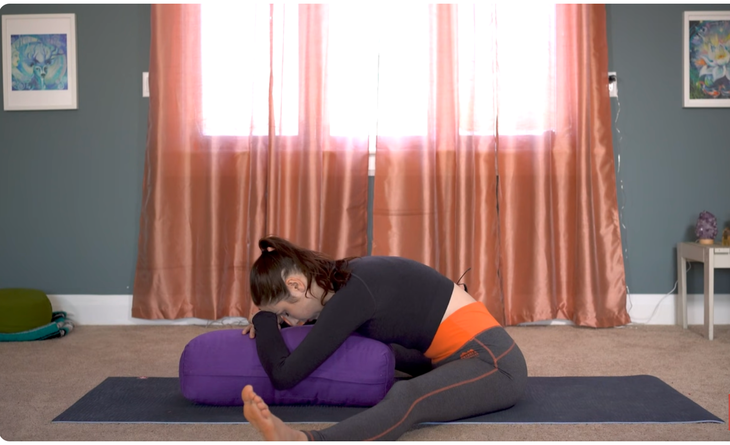
Butterfly, Caterpillar, or Dragonfly
Slowly push into either the bolster or the mat to lift yourself and make your way to a seated position. You can choose what kind of forward fold you’d like to come in—maybe Seated Butterfly with the soles of your feet together and knees apart, Caterpillar with both legs straight in front of you, or a wide-legged straddle fold sometimes known as Dragonfly Pose. Keep the bolster or your pillows somewhere in front of you and within reach as you initiate the forward fold by tilting your pelvis forward.
You can rest your head or chest on the prop if you like. When you’re about halfway through the pose, perhaps turn your head to face the other direction and rest the opposite cheek on the support. This is also a good opportunity to make any adjustments that are required in the pose. Maybe you’ve noticed you’ve gone a little too far or, conversely, maybe you’re able to fold a little more. Relax your arms and spine. Always come back to the rhythm of your breath, slow and steady, in and out through the nose.
When you’re ready, push your hands into the prop or mat and slowly curl up, inch by inch.
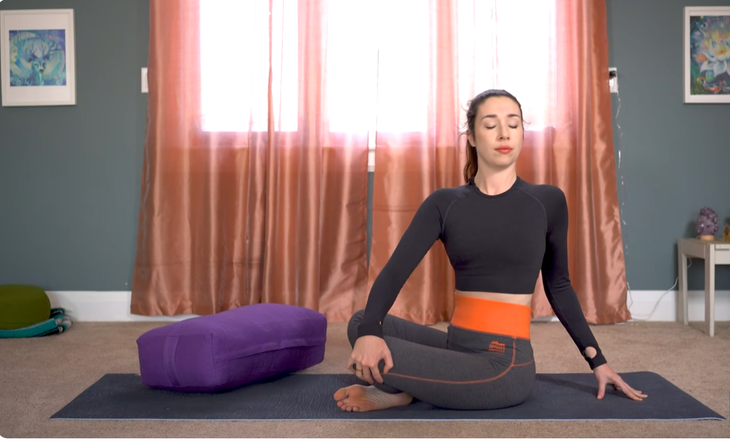
Seated Twist
Before you do another yin yoga pose, take a moment for a counter stretch with a little twist. So bring your legs back in and sit in any way that works for you. Bring your right hand to your left knee and your left hand behind you as you pull your lower belly in reach and sit tall as you twist to the left, then repeat on the other side.
Release and crawl your hands out in a little diagonal forward fold to lengthen through your spine, really reaching and extending through your right fingertips for a side body stretch. Do the same thing on the other side.
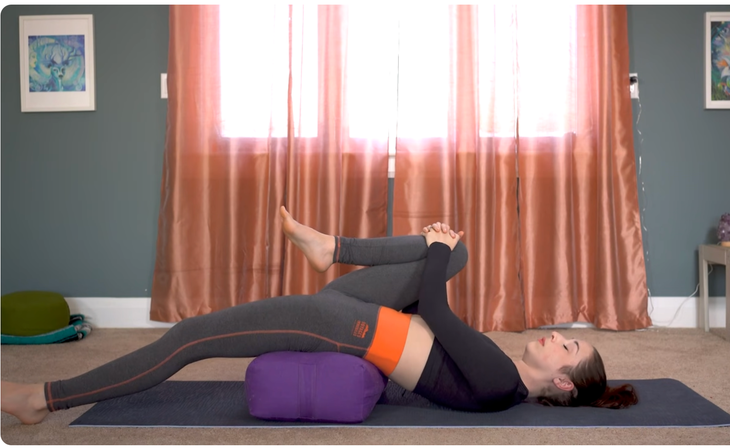
Supported Bridge Pose
Come back to your Supported Bridge with a bolster underneath your sacrum for another variation of the pose. Rather than keeping both feet on the mat, draw your right knee into your chest and hold onto the front of your shin or the back of your thigh. Straighten your left leg in front of you. Rather than feeling this in your low back, you’re trying instead to stretch along the front of your left thigh and hip.
Don’t worry if your left leg is not fully straighten. As long as you’re getting some sensation through the hips, that’s really all you’re looking for here. Adding the support creates a gentle inversion by lifting the hips higher than the heart as a way to really promote relaxation and really nurturing your nervous system.
Slowly switch sides as you pull your left knee in and straighten your right leg out. Notice if this made your props shift at all and adjust as needed. Relax both shoulder blades into the mat. Let your head be heavy and use just enough arm strength to keep your left thigh steady. You’re not straining in your arms.

Waterfall Pose
Bring both knees toward your chest and then stretch them toward the sky in Waterfall Pose, which is like Legs Up the Wall but without a wall. Really let your legs be weightless while your upper body remains grounded. Feel any sensations in your ankles and legs as you invert them this way.
Slowly release your legs back to the floor however you like and slide the bolster out from underneath you.

Savasana
You may like to do Savasana with the bolster underneath your knees and calves. You can also choose to do it without the prop, although it can be really nice, especially for your lower back, to let yourself be supported here. Close your eyes and let your breath relax.
When you’re ready, begin to deepen your breath, wiggling your fingers and toes and maybe stretching your arms overhead to lengthen. Slowly roll onto one side, come up to take a seat, join your hands together at your heart, and feel the effects of your practice. Pause here and notice what has changed or shifted for you.
Thank you so much for doing this 30-minute yin yoga for stress and anxiety sequence with me. I hope that you found some relief from this practice and I hope to practice again with you soon.
